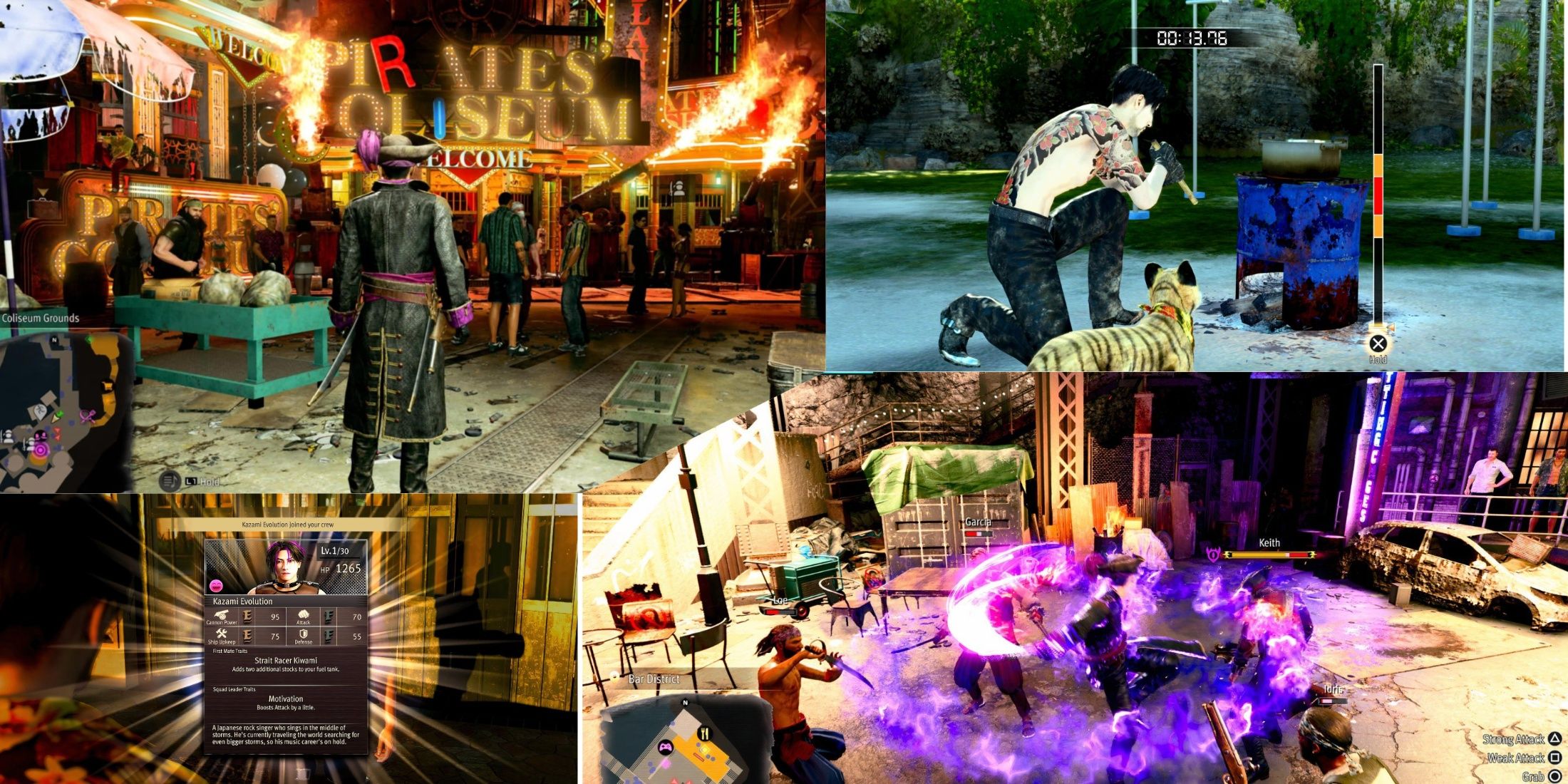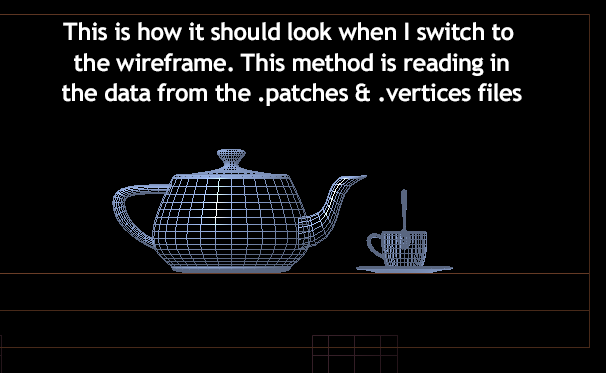uxdesign.cc
A practical framework for implementing AI as a foundational layer in digitalproductsFigure 1: Conceptual representation of AI as a horizontal enabling layer, illustrating its transformative nature similar to electricity in the 20th century. The bright horizontal line represents the AI layer that powers and connects multiple applications and systems, represented by interconnected nodes. Image generated viaKrea.ai.IntroductionAI is a horizontal enabling layerit can be used to improve everything. It will be in everything,Jeff Bezos declared, comparing AI to the transformative power of electricity.These kinds of horizontal layers like electricity, compute, and now artificial intelligence, they go everywhere. I guarantee you there is not a single application that you can think of that is not going to be made better byAI.Just as electricity revolutionized every industry by becoming a foundational utility, AI is fundamentally reshaping our digital landscape in ways that go far beyond simple automation. At Amazon alone, teams are working on literally a thousand applications internally, demonstrating AIs potential for widespread integration.As UX professionals, were at the forefront of this transformation, tasked with creating interfaces that make these powerful capabilities accessible and meaningful to users. Through an analysis of pioneering applications, we can establish a framework for designing AI-driven products. These examples serve as both a conceptual model and a practical guide for structuring products where AI acts as a foundational layer. Beyond showcasing technological advancement, this analysis provides a systematic approach to identifying AI opportunities within your own products.Case 1: Perplexity AIFrom manual information assembly to intelligent discoveryThe Challenge: Breaking free from traditional searchAI is the first truly new interaction-design paradigm in 60 years, observes Jakob Nielsen, and nowhere is this more evident than in information search.Traditional search engines, despite their sophistication, still required users to master a complex dance: crafting precise queries, scanning multiple results, clicking through various pages, and mentally synthesizing information. This process, while familiar, placed a significant cognitive burden onusers.Figure 2: Traditional search interface. A Google search interface showing the traditional approach where users must manually scan, filter, and synthesize information from multiple sources. Note the cognitive load required to process and connect information.The transformation: Reimagining search withAIPerplexity AI embodies this transformation by fundamentally reimagining how humans interact with information. Instead of users adapting to the systems requirements, the AI adapts to userintent.Figure 3: Perplexity AI Interface. Perplexity AIs interface demonstrates the shift from tool-based search to intelligent discovery. Note how it automatically synthesizes information and presents structured comparisons.How it works: The intelligence layerThe system processes queries through interconnected layers that understand context, verify information in real-time, and present synthesized answers that feel natural and conversational.Figure 4: System architecture diagram. Perplexity AIs information discovery system, showing how natural language queries are processed through multiple AI layers for comprehensive, verified answers. Source:Author.Key Components:Query understanding layer: Processes natural languageinputInformation synthesis layer: Connects and verifies multiplesourcesResponse generation layer: Creates coherent, contextual answersInteraction management layer: Maintains conversation flowImpact on user experienceThe result isnt just a faster search engineits a new paradigm for knowledge discovery that feels more like consulting a knowledgeable colleague than operating a digital tool. Userscan:Ask questions naturally without worrying aboutkeywordsReceive comprehensive, synthesized answersFollow up with contextual questionsVerify sources and facts in real-timeThis transformation shows how AI can fundamentally change core user interactions, moving beyond mere automation to create truly intelligent systems that adapt to human needs rather than requiring humans to adapt tothem.Case 2: NotebookLMFrom document management to knowledge orchestrationThe challenge: Beyond digitalpaperTraditional research and note-taking tools merely digitized the paper experience while maintaining its fundamental limitations. Knowledge workers and researchers faced persistent challenges:Manual information organizationLimited connections between documentsDifficulty maintaining coherent management systemsCognitive overload when processing multiplesourcesFigure 5: Traditional research process. Traditional document management approach showing multiple windows, manual note-taking, and disconnected information sources. Researchers must manually create connections and maintain organization systems. Image generated viaKrea.ai.The transformation: AI as a knowledge partnerNotebookLM transforms this experience by implementing AI as an intelligent collaboration layer. Instead of being a passive repository, thesystem:Actively participates in the knowledge workprocessAutomatically maps relationships between documentsSuggests connections you might havemissedAdapts its organization to your thinkingpatternsFigure 6: NotebookLM Interface. NotebookLMs dynamic workspace showing AI-powered suggestions, automatic relationship mapping, and contextual document organization.How it works: The intelligence layerNotebookLM transforms document management through a three-layer intelligence system. The User interaction layer handles direct user engagement through document uploads, natural queries, and note-taking capabilities. The Knowledge processing layerthe systems coreanalyzes documents, maps connections, and synthesizes information using advanced AI algorithms. Finally, the Intelligent output layer presents this processed information as connected insights, related concepts, and research suggestions, creating a dynamic system that actively enhances the research and learningprocess.Figure 7: Knowledge orchestration system. Visualization of NotebookLMs approach to transforming document management into an intelligent knowledge system. Source:Author.Impact on research and knowledge workThis transformation creates a dynamic workspace that:Feels less like a digital filing cabinet and more like a thinkingpartnerEnhances natural workflow while maintaining flexibilityReduces the cognitive load of organizationFacilitates serendipitous discoveriesNotebookLM represents a fundamental shift in how we interact with information: from passive document management to active collaboration with a system that understands and amplifies our thought processes. This transformation demonstrates how AI can serve as more than just a toolit becomes an intelligent partner in the knowledge work process, while maintaining the users autonomy and enhancing their natural cognitive workflows.Case 3: GenwayAIFrom individual interviews to scalable intelligenceThe challenge: Breaking traditional research boundariesThe traditional UX research process has remained largely unchanged for decades, requiring intensive manual effort at every stage. Researchers face significant limitations:Time-consuming participant recruitmentLimited interview capacityManual analysis of responsesLabor-intensive synthesis offindingsTrade-offs between depth and breadth ofresearchFigure 8: Traditional UX Research Session. A traditional user research session showing researchers conducting a one-on-one interview. This manual approach, while thorough, illustrates the core limitation of traditional UX research: the inability to scale without compromising depth of insights. Image generated viaKrea.ai.The transformation: AI-enabled research atscaleGenway AI revolutionizes this paradigm by implementing AI as a horizontal enabling layer across the entire research workflow. Thesystem:Conducts multiple human-like interviews simultaneouslyProcesses multiple data streams in real-timeAnalyzes responses across voice, text, andvideoSynthesizes insights automatically while maintaining research integrityFigure 9: Genway AI Interface. Genway AIs interface showing parallel interview processing, real-time analysis, and automated insight generation while maintaining human oversight.How it works: The intelligence layerGenway AI operates through a comprehensive three-layer system that transforms traditional user research into a scalable intelligence operation. The Data collection layer captures multiple streams of user input through voice, text, and video channels simultaneously. The AI processing core analyzes this data in real-time, recognizing patterns, performing sentiment analysis, and generating insights. The Research insights layer then delivers both quantitative analysis and qualitative insights, automatically detecting trends and providing strategic recommendations.Figure 10: Research intelligence framework. Visualization of Genway AIs approach to scaling user research, showing how multiple data streams are processed simultaneously through AI analysis layers. Source:Author.Impact on UXresearchThis transformation fundamentally reshapes UX research capabilities through:Scale with depth: Enables simultaneous processing of hundreds of interviews while maintaining the nuanced understanding essential to quality research. The system can process multiple data streams without sacrificing the depth of analysis traditionally associated with one-on-one interviews.Real-time intelligence: Combines immediate insight generation during research sessions with sophisticated pattern recognition across large datasets, enabling researchers to adapt and refine their approach during the researchprocess.Augmented expertise: Creates a balanced synergy between automation and human expertise, where AI handles data processing and pattern identification while researchers focus on strategic interpretation and decision-making.Genway AI demonstrates how artificial intelligence can transform UX research from a linear, resource-constrained process into a dynamic, scalable system that amplifies rather than replaces human research capabilities. This transformation maintains the nuanced understanding essential to user research while dramatically expanding its scope and efficiency.The impact on UX design and future implicationsOur analysis of these groundbreaking applications reveals fundamental patterns reshaping the future of UX design. Just as electricity transformed every industry it touched, AI is creating new paradigms for how we think about and design digital experiences.As Jakob Nielsen observes, the best design for AI will retain some of the old graphical user interface elements, resulting in a hybrid UI, mostly based on user intent. But iterations including tweaks and revisions, specified through GUI commands. This insight reveals a crucial principle for designing AI-powered products: the need to balance revolutionary capabilities with familiar interaction patterns.How AI is reshaping digital experiencesAI isnt simply adding features to existing toolsits fundamentally transforming how we design digital experiences. As Henry Modisett, head of design at Perplexity AI, emphasizes, This technology is just going to be available in everything and everywhere. Itll just be a way to enable some core product experience. Itll make some new software thats amazing, and itll accelerate some old software.This transformation operates on three integrated levels:Understanding user intent, even when expressed imperfectlyManaging complex processing invisiblyAdapting interfaces dynamically to userneedsWe see this already in action through tools like Perplexity AI, which has transformed information search into natural conversation, and NotebookLM, which actively discovers connections across documents that users might miss. These arent merely faster versions of existing toolsthey represent entirely new paradigms for human-computer interaction.Building trust through smartdesignThe key to successful AI integration lies in balancing transparency and user control. Each of our case studies demonstrates this principle in action; Perplexity AI shows its sources in real-time, NotebookLM visualizes its thought process when connecting ideas across documents, and Genway AI maintains transparency in its research data analysis. These implementations showcase different levels of AI involvement while ensuring users maintain meaningful control.This balanced approach manifests through specific designchoices:Verification mechanisms: Users can verify sources directly in Perplexity AI.Selective adoption: NotebookLM allows users to accept or reject AI-suggested connections.Expert oversight: Genway AI enables researchers to validate AI-generated insights.By making AIs role visible and keeping users in control, these systems create the foundation of trust essential for effective human-AI collaboration while maximizing the benefits of AI capabilities.Conclusion: The path forward with AI in UXdesignThe transformation were witnessing in UX design isnt just another technological shiftits a fundamental reimagining of how humans interact with digital products. Were moving from an era of digital tools to one of intelligent systems, where AI acts as a horizontal enabling layer that enhances and transforms every aspect of the user experience.Looking ahead, UX teams need to focus on three key priorities:Designing with intention: Move beyond surface-level AI integration by identifying where AI can most meaningfully transform your users experience, shifting from standalone tools to interconnected intelligent systems.Building trust through transparency: Apply frameworks and design patterns that clearly communicate AIs role and limitations to users, making the intelligence layer visible and understandable.Preserve human autonomy: Ensure users maintain meaningful control and understanding of AI-driven features, creating a symbiotic relationship between human insight and AI capabilities.The future of UX belongs to designers who can strike the right balance between AIs capabilities and human needs. Success will come not from maximizing AI usage, but from thoughtfully integrating it as an intelligence layer that augments human capabilities while preserving what makes us uniquely human: our creativity, empathy, and ability to make nuanced judgments based on context andvalues.The question isnt whether AI will transform your products user experienceits how youll lead that transformation. Every UX team now faces the opportunity to evolve their products from collections of tools into intelligent systems that adapt, learn, and grow with theirusers.Are you ready to reimagine whats possible?The AI layer: transforming UX design from tools to intelligence was originally published in UX Collective on Medium, where people are continuing the conversation by highlighting and responding to this story.












